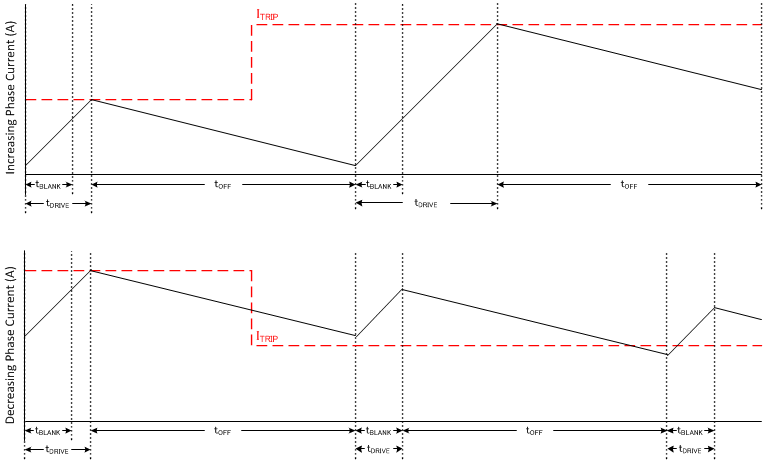SLVSFF0B June 2020 – July 2022 DRV8436E
PRODUCTION DATA
- 1 Features
- 2 Applications
- 3 Description
- 4 Revision History
- 5 Pin Configuration and Functions
- 6 Specifications
- 7 Detailed Description
- 8 Application and Implementation
- 9 Power Supply Recommendations
- 10Layout
- 11Device and Documentation Support
- 12Mechanical, Packaging, and Orderable Information
Package Options
Mechanical Data (Package|Pins)
Thermal pad, mechanical data (Package|Pins)
- RGE|24
Orderable Information
7.3.4.1 Slow Decay
 Figure 7-6 Slow Decay Mode
Figure 7-6 Slow Decay ModeDuring slow decay, both of the low-side FETs of the H-bridge are turned on, allowing the current to be recirculated.
Slow decay exhibits the least current ripple of the decay modes for a given tOFF. However on decreasing current steps, slow decay will take a long time to settle to the new ITRIP level because the current decreases very slowly. If the current at the end of the off time is above the ITRIP level, slow decay will be extended for another off time duration and so on, till the current at the end of the off time is below ITRIP level.
In cases where current is held for a long time, slow decay may not properly regulate current because no back-EMF is present across the motor windings. In this state, motor current can rise very quickly, and may require a large off-time. In some cases this may cause a loss of current regulation, and a more aggressive decay mode is recommended.